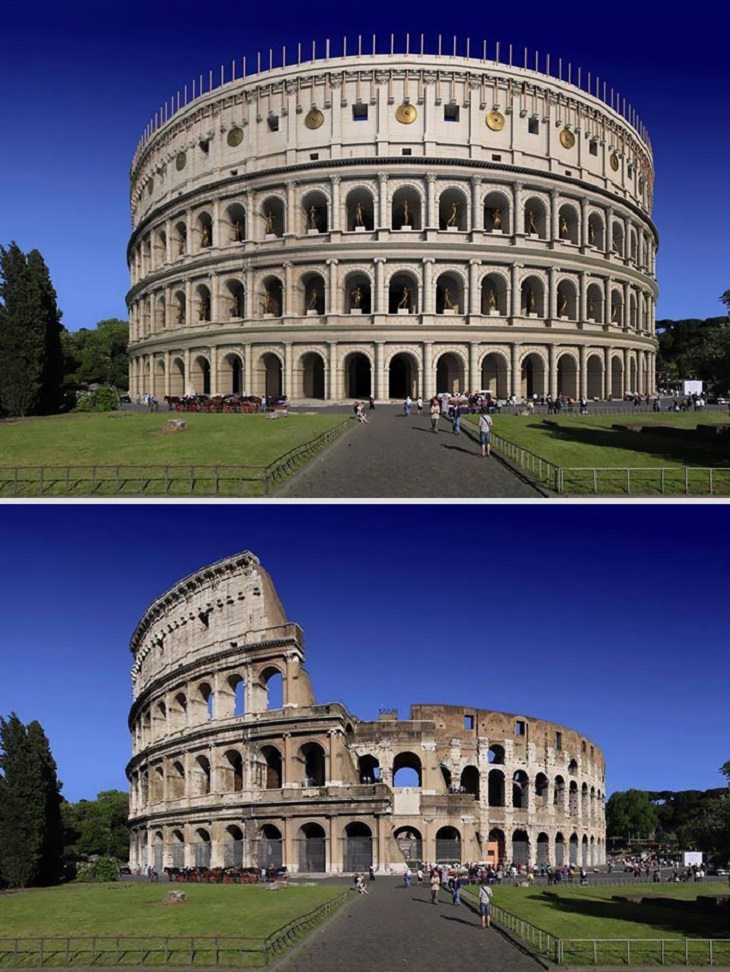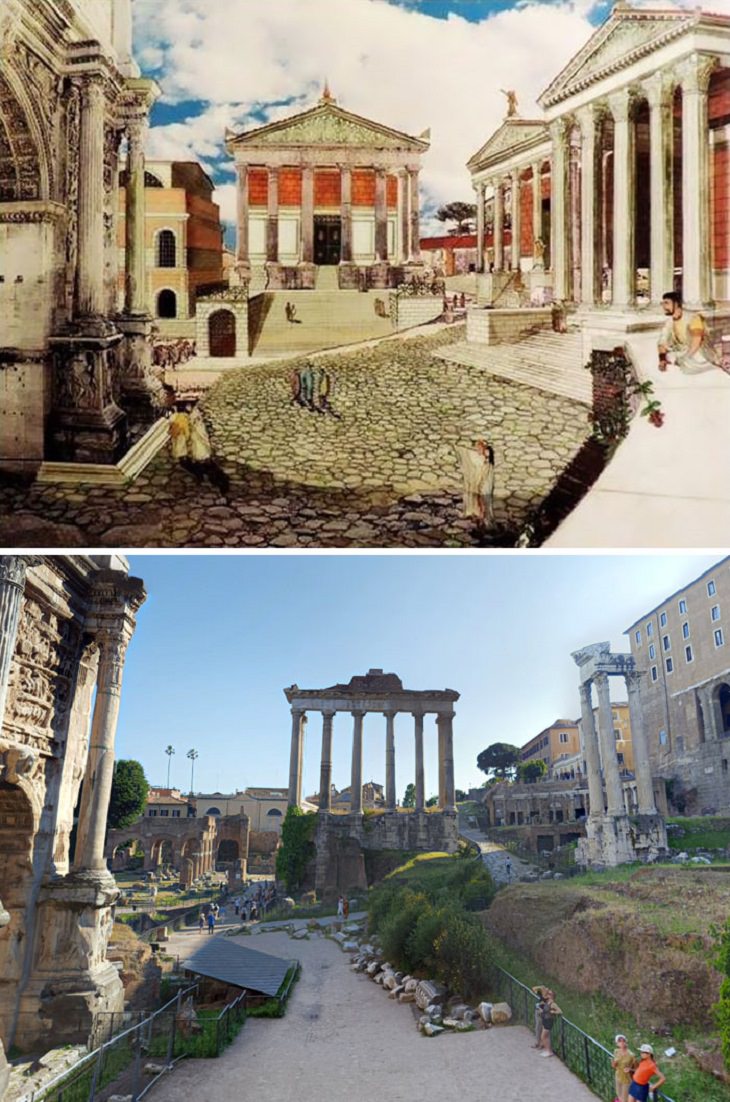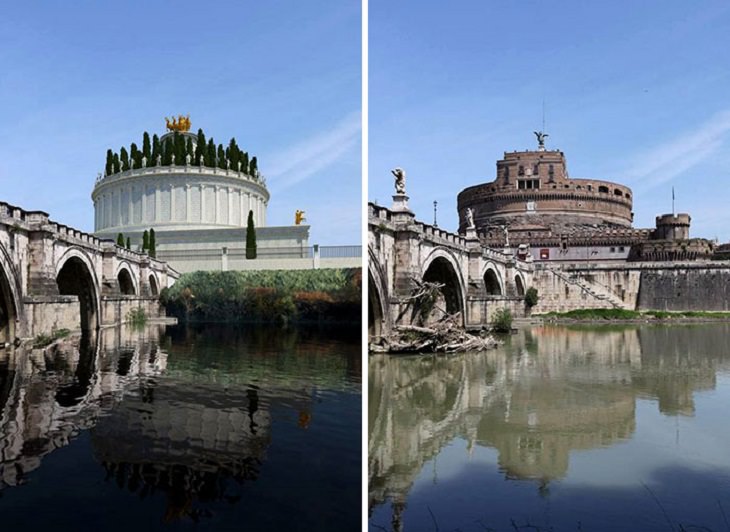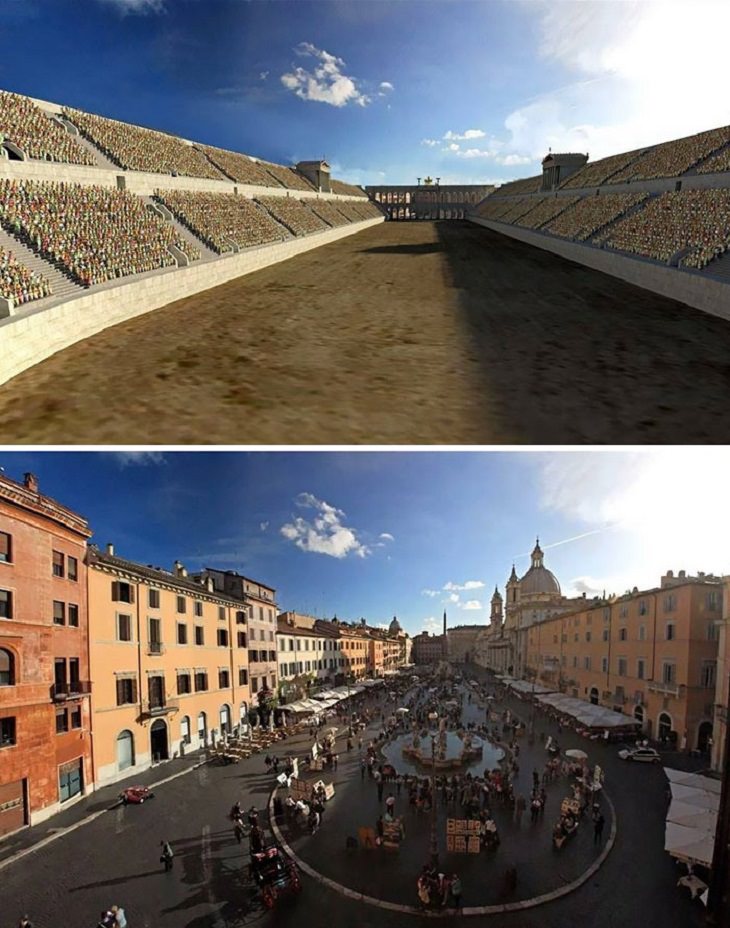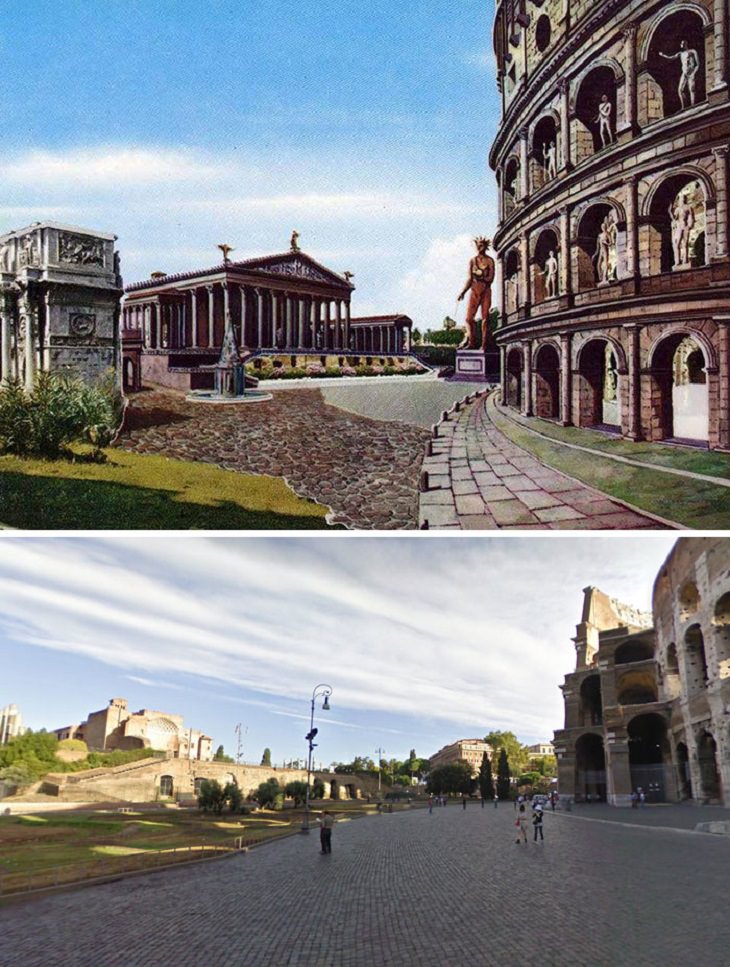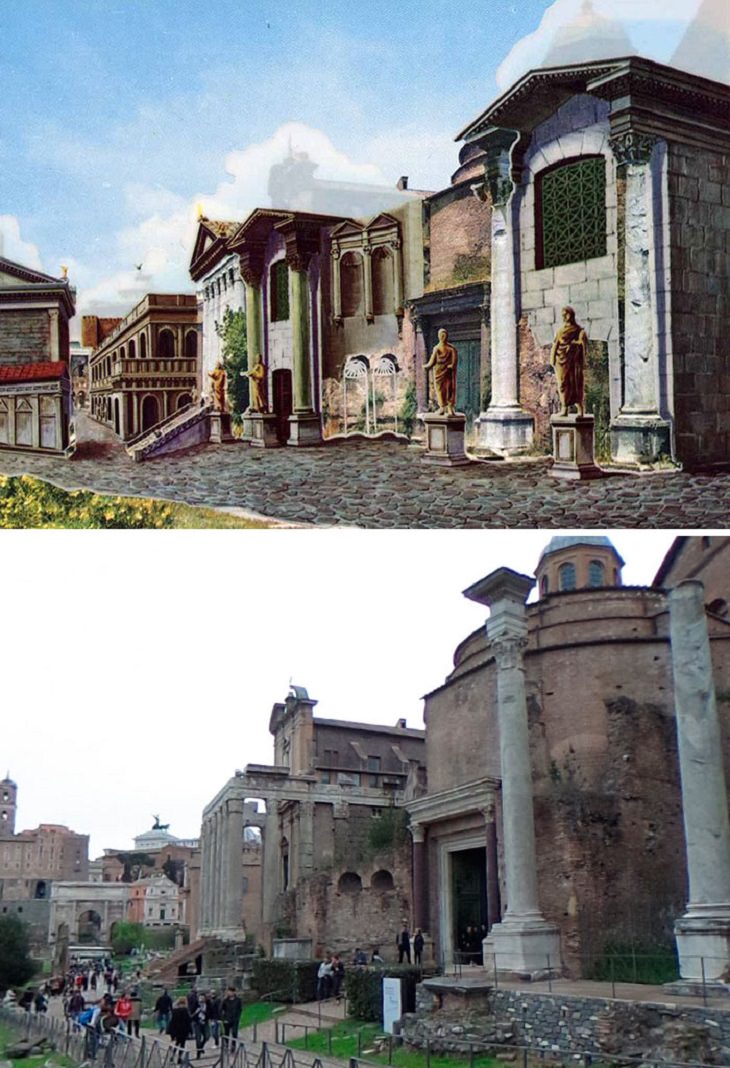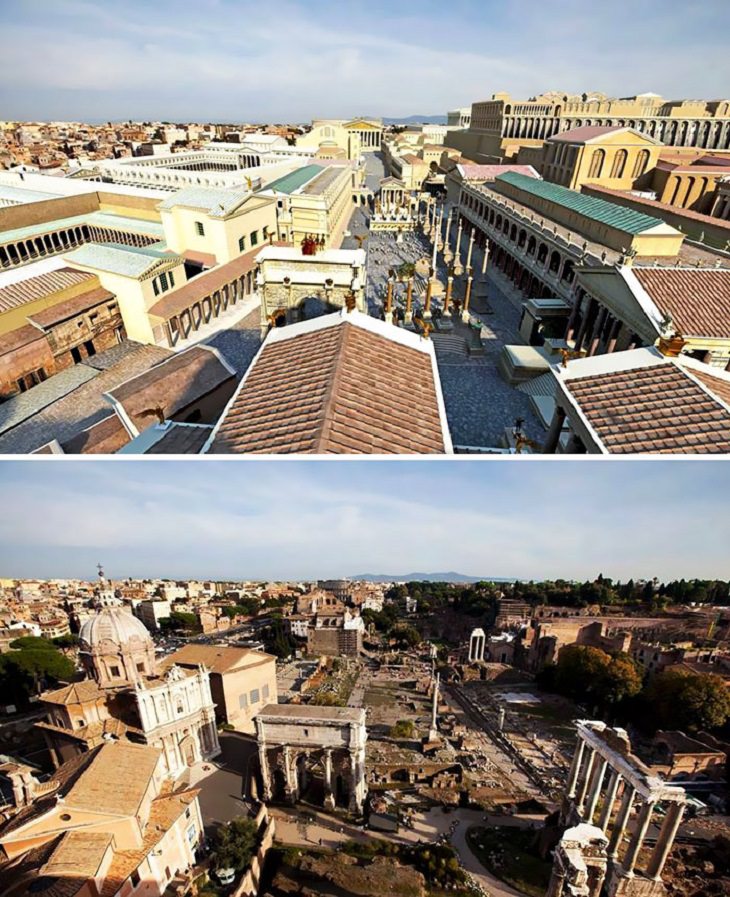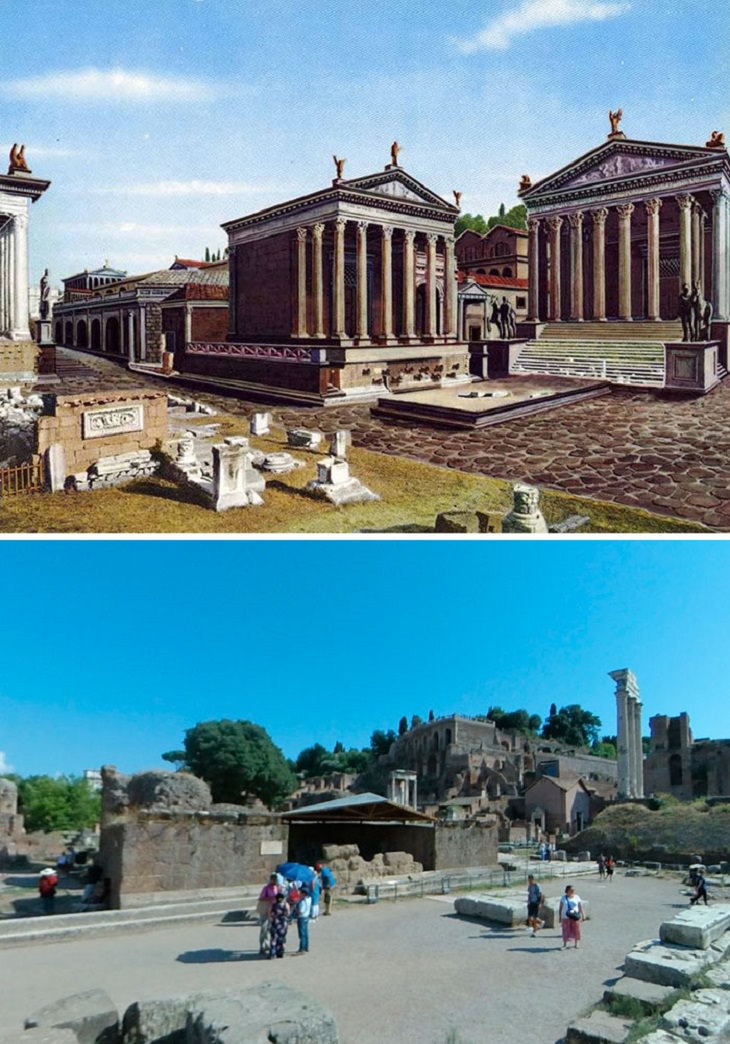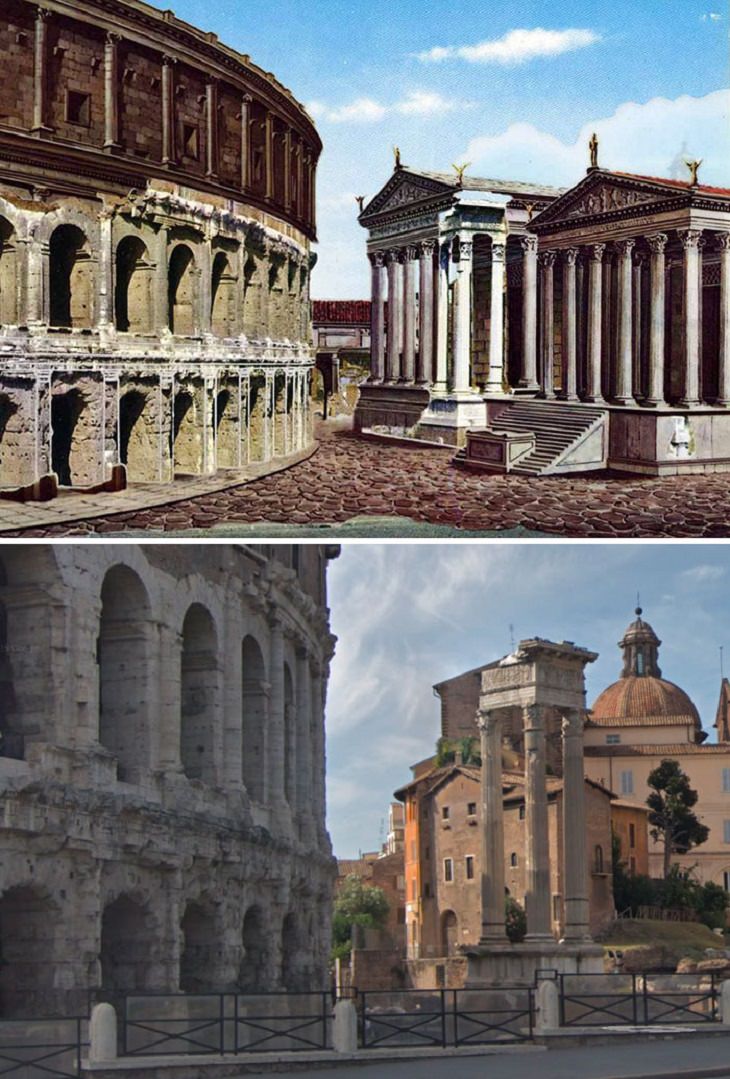1. The Colosseum
When we think of Roman architecture, one of the first things that pops into our minds is definitely the Colosseum. It was built over 2000 years ago, and yet it still stands in the center of Rome, attractive millions of visitors each year.
Back in the day, it was the cultural center of Rome, offering a variety of entertainment to the locals: reenactments of famous battles, mythological dramas, animals hunts, and, of course, gladiator hunts. The amphitheater could host from 50,000-80,000 visitors.
2. Temple Of Saturn
This temple, dedicated to one of the main Roman gods, Saturn, was built in 497 BC. It is located in the western wing of the Roman forum. The temple you see today is actually the 3rd version, as it suffered various disasters and had to be rebuilt. This includes the infamous Great Fire of Rome.
The colorful arcade was believed to be heavily adorned by beautiful ornaments and statues.
3. Mausoleum Of Hadrian
The Mausoleum of Hadrian is now a museum, best known under the name of Castel Sant'Angelo. The building is located in Parco Adriano, and it was commissioned by Emperor Hadrian circa AD 134 as a mausoleum for himself and his family.
Subsequently, the building was destroyed on several occasions, as it was used by the Catholic church as a fortress and a castle. The Mausoleum of Hadrian was once the tallest building in Rome.
4. Stadium Of Domitian
This stadium was built during the rule of Emperor Titus Flavius Domitianus in AD 80, and it was as a gift to Roman citizens. Until AD 217, the stadium was used for athletic contests, but then it was also used for gladiator shows while the Colosseum was under renovation after a fire.
After the Renaissance, the stadium was completely taken apart for building materials. In its place, today you can take a walk through the beautiful Piazza Navona, a later addition to the city landscape.
5. Temple Of Venus And Roma
It has been estimated that this was the largest temple in Ancient Rome. It was built in 135 AD on the Velian Hill (next to the Colosseum, as can be seen from the pictures). Some time in the 9th century, a severe earthquake hit the temple and destroyed it completely.
Around 850, Pope Leo IV ordered a temple to be built in its place. We can see only a few columns of the once-magnificent temple standing today.
6. The Basilica Of Santi Cosma E Damiano
Today this temple is a basilica in the Roman Forum, but it used to be a Roman building dedicated to the son of emperor Maxentius. Interestingly, parts of the original Roman temple are incorporated in the church we see today. It was built in the early 4th century and was possibly used as the library of an imperial forum at some point.
In 527, it turned into a church and is considered a valuable relic with early Christian art today.
7. Roman Forum From The Tabularium
This part of forum housed the official records office and various governmental offices of ancient Rome. It is one of the better-preserved architectural pieces, with a 67 m (220 ft) long corridor surviving to this day. The building itself was built 78 AD under the public redevelopment program of the Capitoline Hill after the Great Fire of Rome.
8. Temple Of Castor And Pollux And Temple Of Caesar
Few remnants remain of these two distinguished temples. The Temple of Castor And Pollux used to be the meeting place of the Roman Senate. The building itself was built in 495 BC as a means of commemorating the victory of the Battle of Lake Regillus.
According to a legend, the Dioscuri, the two mythological warrior brothers, appeared to help the army of the Roman Republic that day, to whom the temple was dedicated. Only fragments of the temple survived to this day, the most apparent ones being the 4 columns that can be seen on the picture.
The Temple of Caesar was erected in 29 BC. It was the first temple dedicated to a Roman resident, and it honored the memory of Julius Caesar.
9. Theater Of Marcellus
Built in 13 BC, the Theater of Marcellus was the largest and most important theater in the empire. It was used for various performances, like drama and song. The building was an open theater that featured a variety of sequencing columns.
Despite its changing use through the history, with the theater being a fortress during the Middle Ages, some sections of the original building survived to this day.
10. Circus Maximus
The Circus Maximus was the first and the largest stadium in the empire, accommodating over 150,000 spectators. It used to be a chariot-racing stadium and an entertainment venue, especially famous for hosting public celebrations and Religious festivals. Today, Circus Maximus turned into a public park.
11. Roman Forum
The Roman Forum used to be the heart of Rome. This square was surrounded by some of the most important ancient government buildings, but only ruins of those buildings survived to this day. At the time, the forum was the location for the most important public speeches, criminal trials, gladiator matches, but also a market.
Today, it’s one of the key tourist locations in Rome, showcasing the remnants of the empire’s glory.

